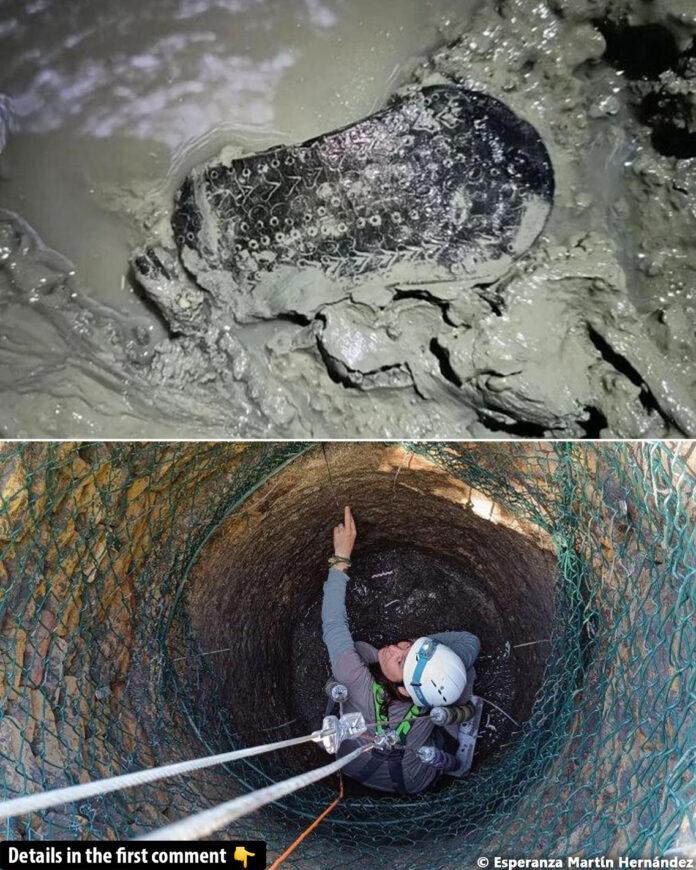In the depths of an ancient Roman well in Lugo de Llanera, Spain, archaeologists unearthed an extraordinary artifact that offers a rare glimpse into life 2,000 years ago—a single Roman sandal. Despite its humble purpose, this decorative and well-preserved piece of footwear has captivated historians and archaeologists alike, shedding light on the Roman settlement of Lucus Asturum and its inhabitants. This remarkable discovery underscores the power of archaeology to connect modern audiences with the intricacies of daily life in the distant past.
Rediscovering Lucus Asturum: A Lost Roman Settlement
Lucus Asturum, located in present-day Lugo de Llanera in Asturias, was a thriving Roman settlement between the 1st and 4th centuries A.D. Renowned as an administrative and communication hub in northern Hispania, it was significant enough to be included in the Geography of the Greek scholar Ptolemy. However, the settlement’s trace was lost for centuries until the Provincial Commission of Monuments initiated excavations in the 1930s. Unfortunately, much of the material discovered during this period was lost or destroyed.
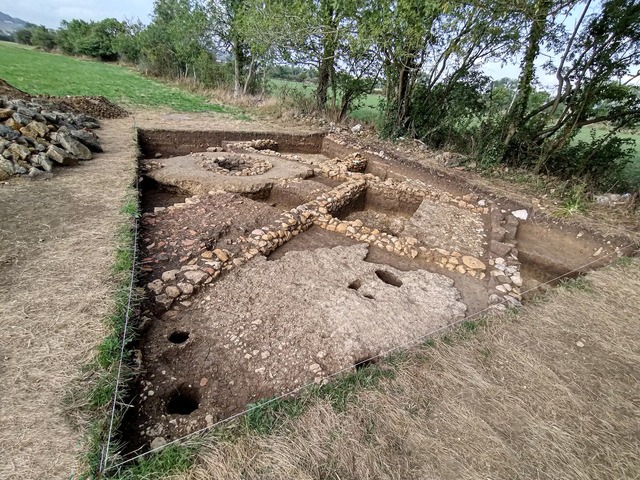
In 2018, the Llanera City Council reignited interest in Lucus Asturum by funding excavations that employed advanced technologies such as Lidar, satellite imagery, and thermography. These non-invasive techniques revealed a wealth of archaeological features, including baths, canals, and residential structures, hidden beneath the grassy meadows. Among these findings was a large house containing a well, which would later yield one of the site’s most fascinating artifacts.
Video
Explore the Roman military sandal, the caliga, in this fascinating documentary – watch the video to learn how this iconic footwear shaped ancient warfare!
The Well That Preserved History
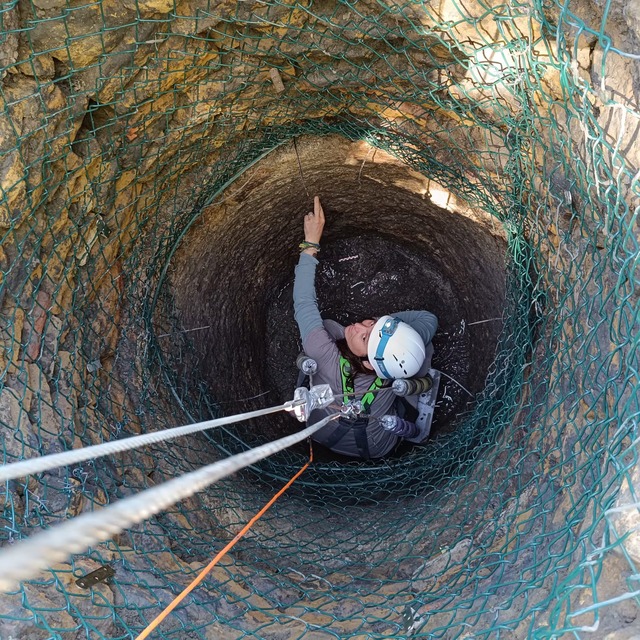
The well, part of a Roman residence, became a focal point for archaeologists in 2021. Excavations resumed after delays caused by the pandemic, with researchers employing a pulley system to descend into the well and recover its contents carefully. Thanks to the anaerobic conditions created by silt and clay, organic materials within the well were remarkably well-preserved, including seeds, chestnuts, wooden fragments, and even a section of the well’s cover.
At a depth of three meters, the team made a unique discovery—a Roman sandal, almost fully intact. The silt at the bottom of the well had created an oxygen-free environment that prevented microorganisms from decaying the sandal’s organic materials. This preservation was crucial, as organic artifacts from this period are often rare due to their fragility and susceptibility to degradation over time.
The Roman Sandal: A Unique Artifact
What sets this particular sandal apart is its decorative design, featuring circles, ovals, and falciform (sickle-shaped) patterns. As the only known example of a decorative Roman sandal from Hispania, it represents a unicum, or one-of-a-kind archaeological find. The sandal retains notches along its edges, which would have been used to secure it to the wearer’s leg.
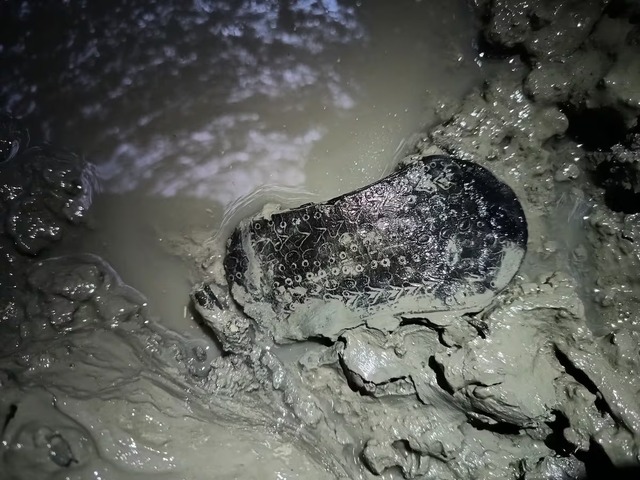
Archaeologists speculate that the sandal was lost by someone attempting to clean the well. It likely became stuck in the mud at the bottom, where it remained undisturbed for two millennia. The intricate designs suggest that the owner was likely a well-dressed individual, perhaps a member of Lucus Asturum’s upper class.
Currently, the sandal is refrigerated to prevent further degradation while plans for its restoration are underway. Once restored, it will be exhibited at the Archaeological Museum of Asturias, where visitors can marvel at this rare connection to ancient Roman life.
What the Well Reveals About Roman Life
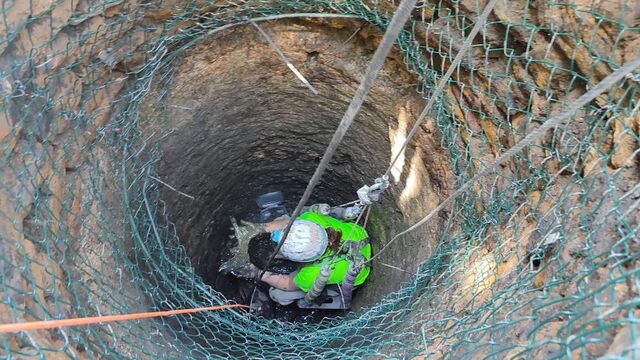
The sandal was not the only artifact found in the well. Researchers also uncovered a wealth of items that paint a vivid picture of daily life in Lucus Asturum. These included jars, mollusk shells, pine nuts, animal remains, and a bronze cauldron. Together, these artifacts reflect the resourcefulness and lifestyle of the settlement’s inhabitants, who relied on both agriculture and trade for sustenance.
The well itself was a vital part of the household, providing clean water for drinking and other daily activities. Over time, sediment and debris likely accumulated, necessitating periodic cleaning—a task that may have led to the loss of the sandal.
The discovery also highlights the advanced engineering and craftsmanship of Roman society. The well’s stonework bears marks from its original construction, offering clues about the tools and techniques used by Roman builders.
The Historical Significance of Lucus Asturum
Lucus Asturum was more than just a settlement; it was a testament to the Roman Empire’s influence in northern Hispania. Its strategic location made it a hub for trade and communication, linking the Iberian Peninsula’s interior with other parts of the empire.
The artifacts found at Lucus Asturum, including the sandal, provide evidence of the settlement’s connection to broader Roman culture. Decorative footwear, for instance, was not merely functional but also a status symbol, reflecting the fashion and social hierarchy of the time.
Moreover, the well’s contents offer insights into the diet and economy of Lucus Asturum. The presence of mollusks and pine nuts suggests a diet that incorporated both local and imported goods, while the bronze cauldron hints at domestic practices and culinary traditions.
Preservation and Future Research
The preservation of the sandal and other artifacts is a testament to the importance of archaeological conservation. By carefully excavating and studying these items, researchers can piece together the story of Lucus Asturum and its people.
The Archaeological Museum of Asturias will play a crucial role in ensuring that these discoveries are accessible to the public. Exhibiting the sandal alongside other artifacts will not only celebrate the region’s rich history but also inspire future generations to appreciate the value of archaeological research.
Conclusion
The discovery of a Roman sandal in Lucus Asturum is more than just an archaeological curiosity; it is a window into the lives of people who lived 2,000 years ago. From its intricate design to its exceptional preservation, the sandal tells a story of craftsmanship, daily routines, and the interconnectedness of Roman society.
As archaeologists continue to uncover the secrets of Lucus Asturum, each find adds a new piece to the puzzle of Hispania’s Roman past. The sandal, once lost in the depths of a well, now stands as a symbol of the enduring connection between history and humanity, reminding us of the importance of preserving and studying our shared heritage.
